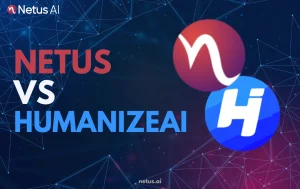
Netus vs. HumanizeAI | Netus.ai
Netus.ai vs. HumanizeAI: Which tool excels in AI bypassing, human-like rewriting or academic reliability? Dive into this detailed breakdown comparing features, accuracy or use cases.
Twitter Bio Ideas: How to Avoid Copyright Infringement with Originality

Content writer and editor for Netus.AI
Twitter Bio Ideas. In today’s digitally driven world, social media platforms like Twitter have become crucial marketing tools for businesses of all sizes. Companies use these platforms to engage with their audience, interact with potential customers, and expand their online presence. However, while leveraging social media for growth, businesses must be cautious about adhering to copyright laws and avoiding infringement.
Twitter, in particular, takes copyright infringement seriously and can remove content or suspend accounts found to be in violation. Instances such as copying another company’s bio, logo, or name can be considered a legal risk and can damage the credibility of the company involved. To capitalize on social media opportunities and maintain a professional image, businesses must be mindful of their Twitter activities and ensure compliance with the platform’s policies.
Twitter has established policies to safeguard intellectual property uploaded by users. To prevent content takedowns and potential account blocking, it is essential for users to understand the types of materials considered under copyright laws.
In compliance with the Digital Millennium Copyright Act (DMCA), Twitter swiftly removes reported copied content. The original content creator can then pursue legal assistance for copyrighted material protection.
Before taking action against unauthorized content usage, the original poster should evaluate if the duplicated content falls under “fair use.” If it does, they may directly contact the account owner responsible for reposting the content, aiming for a mutual resolution.
To file a copyright complaint, the claimant must identify the copyrighted work they believe is unlawfully used. Twitter is vigilant in addressing unauthorized usage of profile pictures, header photos, biographies, and other content components.
Content creators should be aware of the steps involved in protecting their materials. For instance, only the photograph can be considered for copyright infringement, not the subject or location of the pictures. Similarly, for videos, another user reposting the same video without permission constitutes copyright infringement.
According to Ruth Carter, an internet attorney and expert on online copyright law, “Copyright exists once you have original work authorship fixed in any tangible medium.” This principle applies to social media platforms like Twitter and Facebook, emphasizing that users must ensure compliant content posting to preserve their social media marketing, ranking, and searchability and maintain a positive experience for their followers.
It’s common for individuals to use similar Twitter bios based on famous quotes or catchy phrases. For personal accounts, these bios often include professional accomplishments, social media links, and other relevant information. However, when it comes to businesses and companies, their Twitter bios play a crucial role in their overall identity. These bios usually feature their websites, achievements, and recognitions.
Replicating a company’s Twitter bio might negatively impact its business and identity, leading the affected party to take action. The primary defense against such copyright infringement is applying fair use of the content. Twitter considers any financial loss suffered by the content owner due to copyright violation as a severe matter.
In addressing these issues, Twitter’s copyright policy advises the involved parties to consult an attorney before initiating any action. By following these guidelines, users can ensure their bios do not infringe on others’ copyrights.
When creating a Twitter bio, users have various approaches to choose from depending on their goals, personality, and target audience. For businesses and organizations, their Twitter bio should reflect their brand identity, including company mottos, achievements, links to social media profiles, and official websites.
Another popular approach is using humor to make bios more engaging. Funny Twitter bios often attract attention and increase engagement. Here is a selection of amusing bio ideas for those seeking to add some wit to their profile:
Remember to keep bios within the 160-character limit, while ensuring that they are informative, creative, and unique. Incorporate relevant hashtags and emojis to add personality, and consider using SEO skills to help your bio appear in search results. The overall goal is to create a bio that piques the interest of your target audience and showcases your individuality.
To safeguard your Twitter bios and written content from potential copyright issues, consider using a copy checker tool. These tools help identify overlaps with pre-existing content found on websites and search engines, ensuring originality.
To use a copy checker:
To maintain content integrity, ensure that all copied segments are revised or properly cited. Additionally, when using videos, images, or artwork, always give credit to the original creators to avoid copyright infringement.
While it’s essential to obtain permission from copyright holders, there are fair use exceptions, which allow you to use copyrighted material for specific purposes, like commentary, criticism, or education, without obtaining permission. Nevertheless, even under fair use, it’s advisable to credit the source to avoid confusion.
Remember to be cautious when using creative works, as they might be copyrighted even if they don’t seem like it. If uncertain about the copyright status of content, it’s best to avoid using it.
While adding a copyright disclaimer (e.g., “All rights reserved” or “No copyright infringement intended”) in your bio might show good faith, it doesn’t legally protect you from copyright infringement claims. Always prioritize securing permission or adhering to fair use guidelines when using copyrighted material.
Song lyrics, quotes, and other creative works are usually copyrighted, and using them without permission could lead to copyright infringement. However, if the material falls under fair use due to its purpose, you might be able to use it legally. Nevertheless, always credit the original author and consult legal guidance when in doubt to navigate copyright issues more confidently.

Netus.ai vs. HumanizeAI: Which tool excels in AI bypassing, human-like rewriting or academic reliability? Dive into this detailed breakdown comparing features, accuracy or use cases.
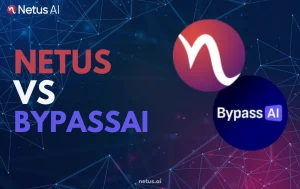
Netus.ai vs. BypassAI: Which tool excels in AI bypassing, human-like rewriting or academic reliability? Dive into this detailed breakdown comparing features, accuracy or use cases.
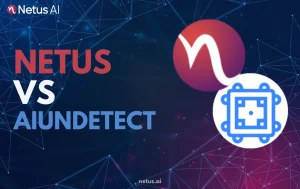
Netus.ai vs. AIUndetect: Which tool excels in AI bypassing, human-like rewriting or academic reliability? Dive into this detailed breakdown comparing features, accuracy or use cases.

Netus.ai vs. AIUndetect: Which tool excels in AI bypassing, human-like rewriting or academic reliability? Dive into this detailed breakdown comparing features, accuracy or use cases.
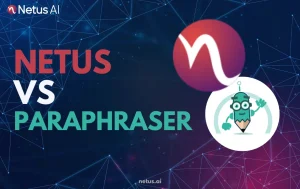
Netus.ai vs. Paraphraser: Which tool excels in AI bypassing, human-like rewriting or academic reliability? Dive into this detailed breakdown comparing features, accuracy or use cases.
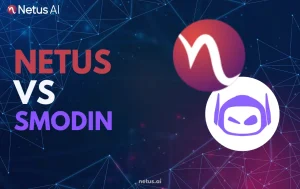
Netus.ai vs. Smodin: Which tool excels in AI bypassing, human-like rewriting or academic reliability? Dive into this detailed breakdown comparing features, accuracy or use cases.
@ 2024 Netus AI.